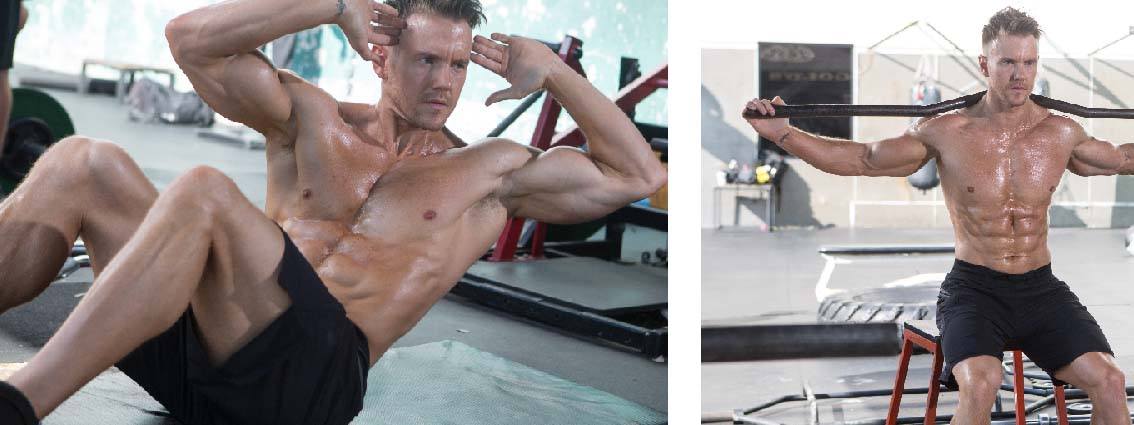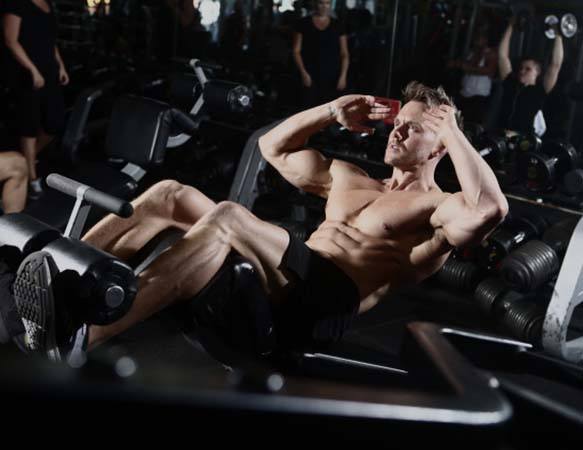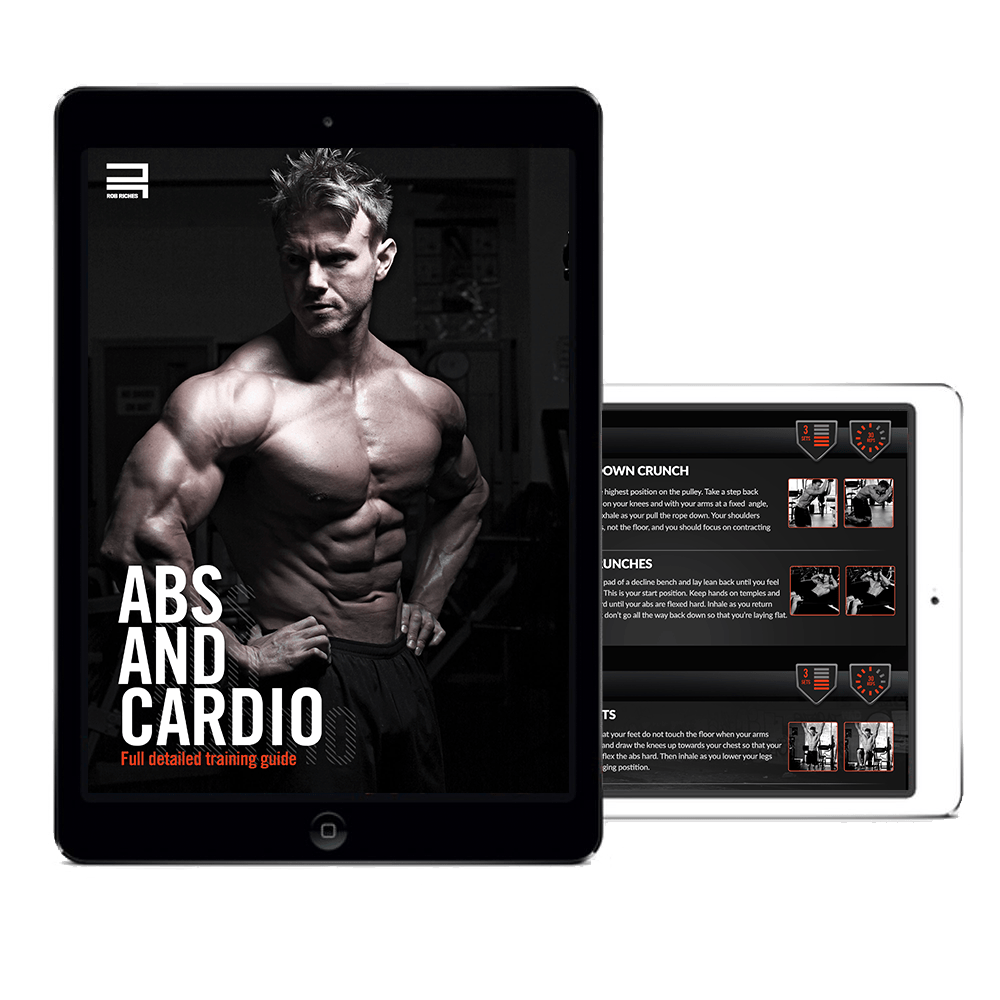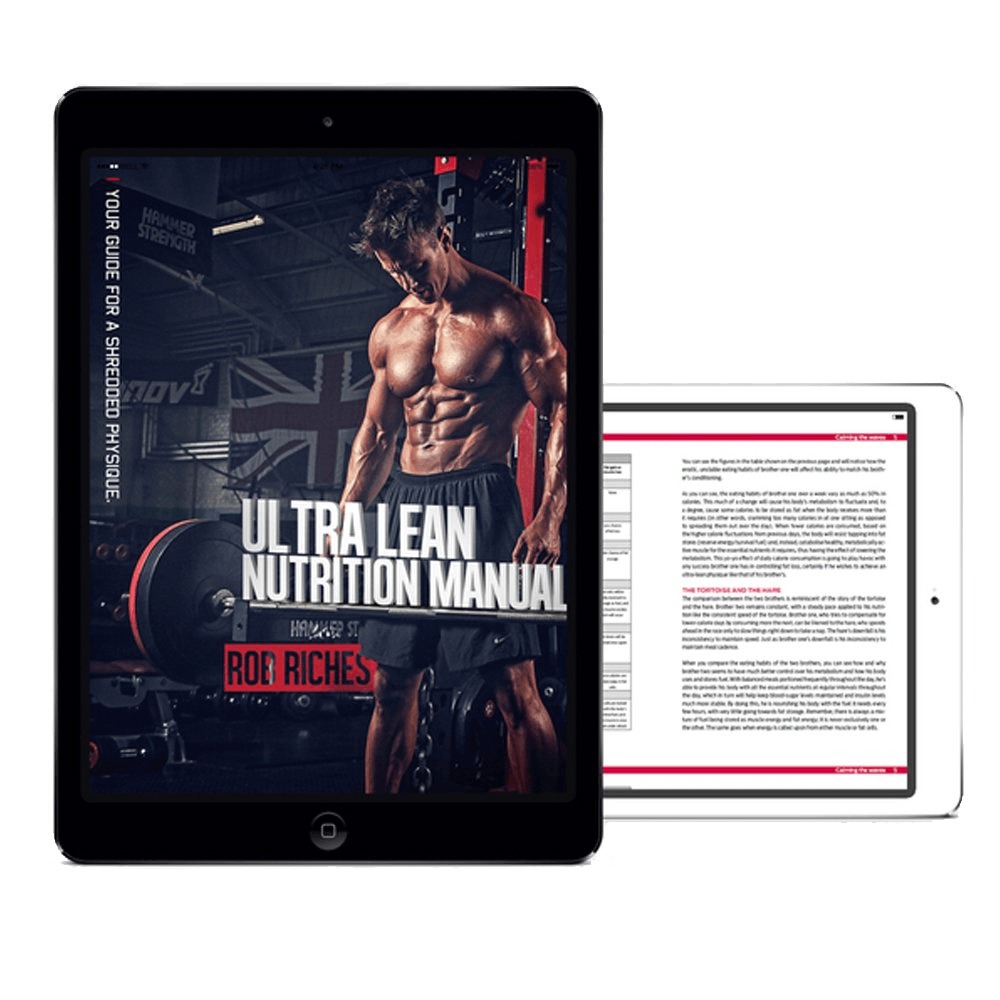Having visible abs is available to anyone who has commitment and dedication
June 15, 2018
I was around the age of 14 when I started buying popular fitness & lifestyle magazines. I wanted to be on the cover one day, and made a promise to myself that I would do everything I could to one day make that happen. I achieved my first cover almost 10 years later. This dream is possible for anyone to follow and achieve for themselves.
You may have heard people say that – Abs are made in the kitchen, which is basically them saying that as long as you eat right, you’ll get abs. I’ve always felt very differently about this. Sure, if you eat a good, clean, healthy diet, you’ll be able to limit body body fat levels and reveal the abdominal muscle structure. None of this accounted for the deeply carved and prominent cuts that I knew you could only achieve from training the abdominals and conditioning them through exercise and movements. Simply being lean wasn’t what I was interested in. I wanted to look and function as an athlete, and this meant training like one also. If you’re happy with Abs that are made in the kitchen, then simply watch what you eat and stay well hydrated. If like me, you wanted a deep, washboard-like six-pack abs, that also benefited your training and general well-being beyond looking incredible, then keep on reading.

← Have You Seen This?
In need of an extra boost to your training? Check out my free Abs Guide, and Ultra Lean Nutrition Manual
One For All, And All For One
Let’s get something straight – your abdominals are all connected and involved in every abdominal-based movement. Think of them like guitar strings and every song you played had to involve each and every string. Now imagine that for every abdominal-type exercise you performed, your six-pack guitar would play a different tune, but still with all strings used. With this in mind, you can see that one particular exercise won’t just work one area of the abs – say the lower abdominal region, which tends to hardest to get lean (due to a layer of body fat that clouds them, and body fat tends to be stored more around the waist, gut, hips, and gluteal muscles).
I’ve found the best practice is to train the abdominals as a circuit, performing multiple movements that whilst each work all the muscles, certain movements will stress a higher amount on a particular region.
It’s A Joint Effort
Unlike the arms, or chest, where you can train hard for several months and see them grow and get stronger, even if your focus towards your diet wasn’t that great, the abdominals require a different approach. First of all, they’re not going to grow bigger like your biceps might. The biceps have a muscle belly that can increase and grow. The abdominals don’t. The abdominal muscles are a long sheath of muscle (think of thin strips of bacon), that can be strengthened and conditioned, and even grow a little, but not in the same sense as the chest of bicep muscles.
If you truly want to look down and see an impressive set of abdominal muscles, then you’re going to need to look at the bigger picture, which means focusing on your diet, staying well-hydrated, and even adding in cardio to your weekly routine (even when I feel lean enough, I still regularly perform cardio – as it’s another area of my fitness level I can maintain, in addition to working the core as one, and keeping body fat levels in check, as this tends to be the primary fuel source during low-impact, stead-state cardio).
With that said, I don’t want you thinking that “I’ll start training my abs when I’m a little leaner so I can see them, and I’m not just wasting my time”. I said if you want to see an impressive set of abs. You can still improve and see results within the first few weeks, regardless of your diet (so long as you’re not eating more than when you first started). It’s also a great motivator that can spur on more commitment and help encourage you to the next level. Every marathon starts with a single footstep in the right direction, and this game of building, defining, and conditioning, is no race, so keep your head up, eyes on the prize, and remain strong and motivated for the road ahead. You’re going to love it.

Lift, Bend, Crunch, & Flex
The abdominal muscles are involved in a lot of different movements, and it can be difficult when first starting out to know which ones you should perform. Whilst there are dozens of different exercises that involve the abdominal muscles, I only use 4 base movements. Together, these 4 exercises offer me a complete core workout, that allow me to target the most common areas of interest: The upper abdominal region, the lower, my sides (often neglected by most), and the V-taper around my waist.
The four basic moves look like this: #1. By crunching your shoulders forwards (in a half-moon trajectory towards your waist), you’re working the upper abdominals. If the hips curl forwards (not upwards, but forwards as if trying to meet up with your shoulders but only make it 1/4 of the way), thats your lower abdominals being called into work. A lateral (side) flexion at the waist will help strengthen and condition your obliques and intercostal muscles, (and not thicken out your waist like I’ve heard so many claim). The final movement is a rotation one. Rotating your upper torso from a fixed hip position, is a great movement that can help tighten up your waist, and give you that V-taper look.
It’s A Circuit Thing
Given the abdominal muscles structure and proximity to the lungs, they get quick access to oxygen, meaning they can replenish faster than other muscle groups, and withstand a more grueling exercise approach. I’ve always found it to be most effective when training the abs within a circuit (usually after my morning cardio when my stomach hasn’t had food yet, and I can really contract the muscles hard for a great squeeze on every rep). This means performing exercise 1, immediately followed by exercise 2, 3, and 4, without any rest between exercises. As soon as I’ve completed the last rep on exercise 4, it’s back to the start again, and I’ll repeat this process 2 or 3 times.
You can see below that I’m aiming for a higher rep range than with most other muscle groups, and often using little to no additional weight. Volume and intensity work best for training the abs.
Here’s a simplified approach to ab training: Exhale deeply on every rep so as to fully contract the abs at the end of each rep. You don’t always have to follow as full of range of motion as your body allows – take a crunch for example: if lying on the floor, I can feel my abdominals maximally contract just by lifting my shoulders off the ground and squeezing my abs. I don’t need to bring my shoulders all the way up into an upright seated position. Feel each rep. Don’t lose yourself in thought or find yourself simply counting to get to the end of each set. Remain conscious and aware of how you perform each and every repetition.
Finally, start at your own pace. If all you can achieve is 5, or 8, or 10 reps on each of the exercises below, thats fine. You’ll soon find yourself improving and able to increase the number of repetitions.

Exercise 1
DECLINE BENCH CRUNCHES*
3 sets of 20-15 reps
Exercise 2
PLATE SIDE BENDS*
3 sets of 20-15 reps (each side)
Exercise 3
HANGING KNEE LIFTS
3 sets of 20-15 reps
Exercise 4
SEATED BAR TWISTS
3 sets of 50-30 reps (total twists)
*(Perform as a circuit, with each exercise performed once followed by the next with out rest. Then repeat the circuit 2-3 times more).



